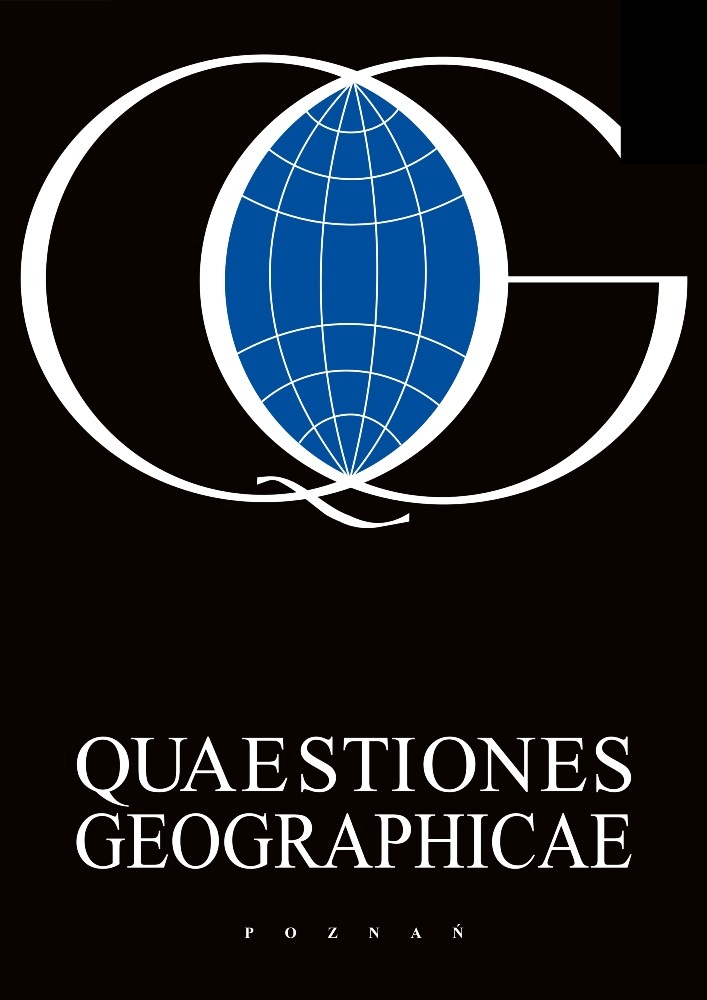Abstract
One of the important topics in the current discussion on causes of climatic changes is a proportion between natural and anthropogenic factors. The majority of climatologists are of the opinion that at present signs of the antropogenic factor are visible only on a local scale. An evaluation of the impact of this factor on a global scale will be possible in the future as more and more data on the physical parameters of Earth’s atmosphere are to obtain using meteorological satellites. The largest series of meteorological data, which currently constitute the basis of all analyses and forecasts concerning climate changes in the immediate and distant future, come from urban areas. The results of meteorological measurements are constantly influenced by the factor of municipal development, changes in the measurement locations within administrative borders, and also by variations resulting from the geographical location, the type of building development, and the colouring of the city. The city, depending on the dominant colour, and also on the colour of the surrounding area, does not always generate a urban heat island. There are areas around the globe, mainly in tropical latitudes, where the city is colder than the surrounding areas, which leads to the occurrence of a urban cold island.
References
Boryczka J., 1993. Naturalne i antropogeniczne zmiany klimatu Ziemi w XVII—XXI wieku. Uniwersytet Warszawski, Wydział Geografii i Studiów Regionalnych, Warszawa.
Boryczka J., Stopa-Boryczka M., Kicińska B. & Żmudzka E., 1992. Atlas współzależności parametrów meteorologicznych i geograficznych w Polsce, t. 7. Zmiany wiekowe klimatu Polski. Wydawnictwa Uniwersytetu Warszawskiego, Warszawa.
Climate Change: the IPCC response strategies, 1991. World Meteorological Organization, United Nations Environment Program, Island Press, Washington D. C., Covelo, California.
Fortuniak K., Kożuchowski K. & Żmudzka E., 2001. Trendy i okresowość zmian temperatury powietrza w drugiej połowie XX wieku.Przegląd Geofizyczny 46(4).
Keeling C. D., 1984. Atmospheric CO2 Concentration Mauna Loa Observatory, Hawaii 1958-1983. U. S. Department of Energy Report NDP-001. Carbon Dioxide Information Center, Oak Ridge, Tennessee.
Lamb H. H., 1978. Climate: Present Past and Future. Vol. 1. Methuen, London.
Obrębska-Starkel B. & Starkel L., 1991. Efekt cieplarniany a globalne zmiany środowiska przyrodniczego. Polska Akademia Nauk, Zeszyty Instytutu Geografii i Przestrzennego Zagospodarowania 4, Warszawa.
Sadowski M., 1996. Globalne zmiany klimatu i ich wpływ na środowisko. In: A. Jankowski (ed.), Metody badań wpływu czynników antropogenicznych na warunki klimatyczne i hydrologiczne w obszarach zurbanizowanych. Katowice.
Schönwiese C. D., 1997. Klimat i człowiek. Prószyński i S-ka, Warszawa.
License
This content is open access.
